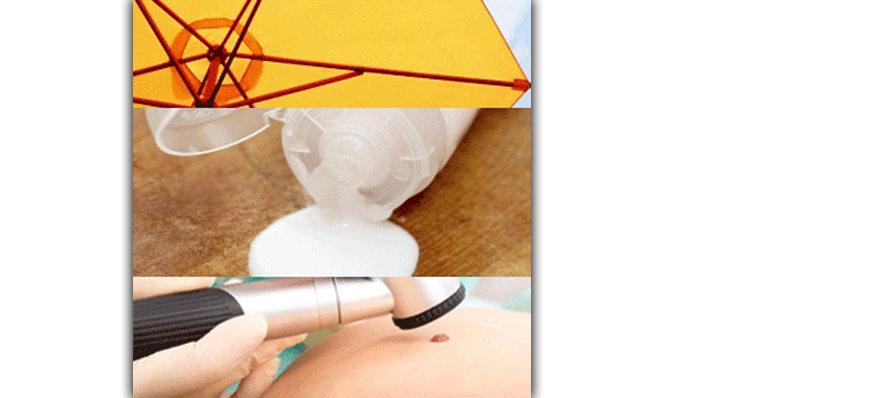2% Monolaurin Cream and 2% mupirocin cream in the treatment of superficial bacterial skin infections: A double blind randomized controlled clinical trial. Protocol updated for more subjects.
Dim-Jamora KCC, Verallo-Rowell VM
PUBLICATION: Journal of Philippines Dermatology Soc 2006
(ABSTRACT)
By Vermén M. Verallo-Rowell, MD, FABD, FABDP, FPDS
Chair/Program Director, VMV Skin Research Centre + Clinics
Clinical Professor in Dermatology, Skin and Cancer Foundation, Inc.
Section Head, Dermatopathology, Makati Medical Center
Immediate Past Chair, Department of Dermatology, Makati Medical Center
Background : Two oils used since ancient times: olive and coconut, have been undergoing closer scrutiny in regard their production and uses. “Virgin”, “Extra Virgin” now applies to both oils, and regulatory standards have been made to define these descriptions. Studies on olive oil, especially as a nutraceutical product are many. Studies on virgin coconut oil (VCO) are much fewer.
The author, a dermatologist and dermatopathologist initiated the very first efficacy and safety studies on the cosmeceutical and nutraceutical uses of VCO in 1998. These clinical studies start at first with topical, then oral use of monolaurin, a derivative of VCO, followed by studies on the topical and oral use of the VCO itself. The timeline on how the author began the clinical studies, followed through the initial results, pursued further investigations to support these initial results, while comparing results with the more established olive, mineral oils, and alcohol, are well detailed in this article.
In recent years, better and more effective products have been produced by the dermatological, cosmetic and nutrition industry to address the perceived demand of consumers to look better and younger. Cosmetic and nutritional products, with some degree of pharmaceutical activity are now called cosmeceuticals and nutraceuticals. In parallel with, also as a result of this demand, there have been rapidly escalating advances in the technological fields of dermatology, chemistry and cosmetics. Inevitably, inquiries have turned towards examining the efficacy and safety of traditional products from nature.
Folklore and the writings on ancient medical practitioners as well as of later day physicians, ascribe to the coconut the ability to effectively treat and prevent many types of diseases. For the skin, and for hair care, the use of coconut products is also a common cosmetic practice.
Studies : A search of the medical literature prior to 1998 reveals the absence of modern evidence-based studies on the dermatological uses of coconut oil and its derivatives. That year clinical studies were initiated by the author on monolaurin, the monoglyceride of lauric acid. At 46-50%, lauric acid is the dominant fatty acid in coconut oil. Monolaurin was described and studied for its antiseptic effects in the 1960s by Dr. Kabara. Subsequently, more studies by other investigators, likewise done mostly in the laboratory, validated these initial findings (Verallo-Rowell, 2005).
The first study in 1998 compared monolaurin and isopropyl alcohol hand gels in a randomized controlled clinical trial (RCT) using a FDA hand gel protocol on antisepsis. With surprisingly positive results on monolaurin’s antiseptic effect, more RCTs followed to examine further properties against varied microorganisms. Several of these studies are published (Abraham, Verallo-Rowell, Baello , 2000; Abraham and Verallo-Rowell, 2001; Sorra, Layson, Dizon-Co, et al, 2004; Dim-Jamora and Verallo-Rowell, 2006; Carpo, Verallo-Rowell and Kabara, 2007).
Another RCT on the anti-viral effect of monolaurin, presented as a poster, was pre-selected as a candidate for Certificate of Recognition by the international jury at the scientific poster presentations of the World Congress in October 2007. The poster was among the top 4%: 150 of 3,501 scientific poster presentations given this honor (Chua and Verallo-Rowell, 2007).
Studies in acne (Harsono and Verallo-Rowell, 2004; Pineda-de los Santos and Verallo-Rowell, 2004), and for antibacterial (Singson and Verallo-Rowell, 2007), antifungal (Pua and Verallo-Rowell, 2007), and antiviral (Carpo and Verallo-Rowell, 2007) effects have been finished, are awaiting submission, or will need more subjects to achieve a greater validity.
For four years, monolaurin, in a continuing product stability study including post-market studies, has been found to successfully preserve a hypoallergenic cosmetic line of products, using no other preservatives, except this emollient ingredient (Verallo-Rowell and Moya, 2007).
Results : All these papers confirm what initially was truly surprising:
1. On human skin, monolaurin is an antiseptic with broad-spectrum effects.
2. Its novel mechanism of action that sets it apart from other currently used antibiotics.
Having demonstrated the antiseptic effects of monolaurin in human subjects, the next studies were on the virgin coconut oil (VCO) itself. Its efficacy and safety as a moisturizer compared with mineral oil, a standard, was shown in an RCT (Agero and Verallo-Rowell, 2005). Though the study was small, this has since then been followed by 7 years of clinical use on numerous patients, for dermatological conditions with dry skin. In atopic dermatitis and psoriasis patients at the author’s clinic, the regular application of VCO has repeatedly been found to have immediate moisturizing effects, and over time, to improve quality of life and to lower flare up rates of the primary condition.
To validate and quantify these clinical observations, two prospective double blind RCTs have just been finished: topical VCO versus mineral oil in plaque-type psoriasis (Kusuma, Yap, and Verallo-Rowell 2007), and versus olive oil in atopic dermatitis (Dillague and Verallo-Rowell, 2007). Both studies show significant improvement with the use of VCO versus the other oils. The latter was pre-selected as the candidate of the Skin and Cancer Foundation, Inc. dermatology residency program for the November 2007 Philippine Dermatological Society Annual Residents’ Research Contest.
Zinc oxide is a gold standard treatment for diaper dermatitis (DD) and irritant contact dermatitis (ICD). Last year, a resident’s award-winning RCT showed pure VCO better than zinc oxide in the treatment of DD (Martires, Montinola, Dizon,2006). Another study with similar results has just been finished using a more elegant preparation of VCO combined with zinc oxide for DD. This product also has potential use as a barrier to use in other irritant contact dermatitis, or for decubitus and other skin ulcers (Tiosudarmin and Verallo-Rowell, 2007).
Oral VCO in Dr. Dayrit’s study was shown to reduce HIV. Oral VCO also cleared the author’s case of Valacyclovir-resistant Herpes gingivo-stomatitis with erythema multiforme vasculitis (Carpo and Verallo-Rowell, 2007). To try to explain these effects of VCO, taken by mouth, in a small pharmacokinetic study, the monolaurin and lauric acid serum values were measured prior to intake of VCO and its control mineral oil. Measurements were repeated 1, 2, 4, and 6 hr after. Up to 6 hr with VCO, 1 hr with the control, a small amount of lauric acid and smaller amounts of monolaurin were detected in the blood (Malabanan-Guiyab and Verallo-Rowell, 2007).
A pilot study has also just been started to determine the nutraceutical and potential systemic antibiotic effect of oral monolaurin in atopic dermatitis (Toledo-Tan, Kusuma, Verallo-Rowell 2007).
With these studies, we hope to better understand the use and proper dosing in dermatology, and from there to other indications, of oral VCO and oral monolaurin as nutritional supplements with antiseptic effects. Many more pharmacodynamic and other drug studies need to be done to determine efficacy and safety of monolaurin as an oral / systemic antibiotic. Its potential especially with the increasing incidence of hospital and community acquired methicillin resistant staphylococcal organisms, and resistance of other organisms towards standard antibiotics, is a challenge.
The role of diet in acne and other dermatological conditions have through the years, received scant attention. Increasingly, however, this is changing, because, primarily from the field of nutrition, newer findings, convincingly show the role of diet in disease genesis. With the use of these studies, the author recently presented a proposal for an anti-inflammatory diet for acne. This includes adding 7% plant saturated fatty acids primarily from VCO (Verallo-Rowell, 2007), which is neutral or anti-inflammatory, to help balance the pro-inflammatory effects of the polyunsaturated fatty acids. Several RCT protocols are now being prepared for this anti-inflammatory diet, not just for acne, but also for other inflammatory skin diseases: psoriasis, atopic, and contact dermatitis.
A related dietary study to help prevent the development of early skin cancers in photodamaged skin is awaiting approval from Philippine governmental research funding agencies (Realubin-Ubalde, GregorioA, Rayco-Solon, Solon, Verallo-Rowell,2007).
In barely 10 years of studying cosmeceuticals and nutraceuticals, the author has shown the wide applications of VCO and monolaurin in dermatology, and potentially in other medical specialties. Other derivatives, especially the coconut’s water promises to have equally impressive results.
Cococeuticals is the author’s niche term to now encompass coconut products with evidence-based research-proven effects for treatment and for health.





